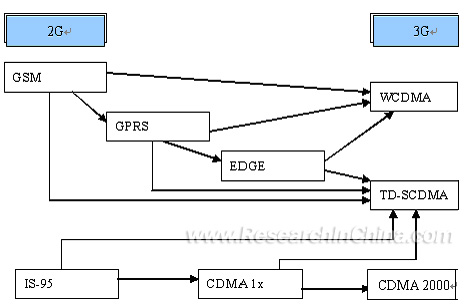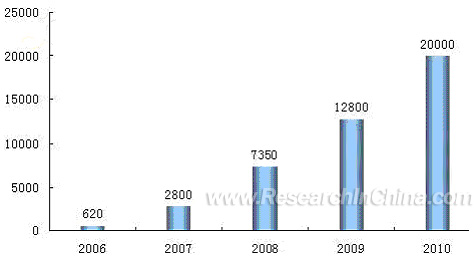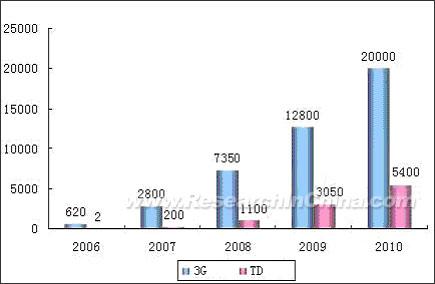TD-SCDMA (Time Division Synchronous Code Division Multiple Access)is China's 3G standard.
TD-SCDMA standard, originally co-developed by CATT of MII and Siemens, combines the SCDMA technology and the TD-CDMA technology.
The document of TD-SCDMA standard was finally amended and completed by CWTS, approved by former Ministry of Posts and Telecommunications of China, and submitted to ITU and relative international standard organizations in June 1998. And TD-SCDMA was approved to be one of the mainstream 3G standards on ITU conference held in Helsinki in Nov 1999.
Road map of the evolution from 2G to 3G in China

According to MII, in 2006, in the Chinese 3G market structure, WCDMA accounts for about 65%, CDMA2000 1X accounts for about 20%, and TD-SCDMA accounts for about 15%. After realizing the importance of 3G technology to fill in the technological gap between domestic and advanced mobile phone vendors worldwide, China has actively developed its own 3G technologies.
As for the investment scale of 3G/TD-SCDMA, ResearchInChina thinks that:

ResearchInChina calls this phenomenon the "3G scissors gap"
3G Subscribers Forecast in China (unit: 10k)

According to Research in China, if 3G licenses are released in 2006, the amount of 3G subscribers will reach 6.2 million in the first year; and three years later, i.e., by 2009, the amount of 3G subscribers will reach 128 million.
TD-SCDMA Subscribers Forecast in China (unit: 10k)

Calculating according to the 3G user scale, ResearchInChina predicts that the amount of TD-SCDMA subscribers in 2006 will be 20,000; 2 million by 2007; 11 million by 2008; 30.5 million by 2009; and 54 million by 2010.
|



